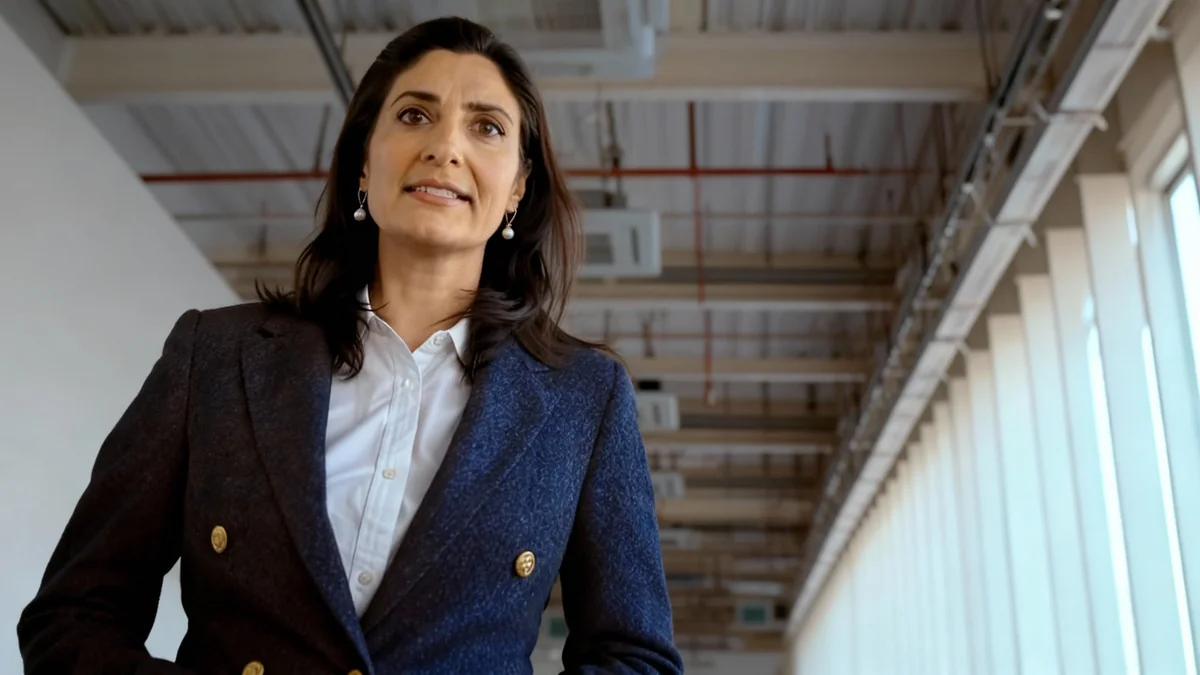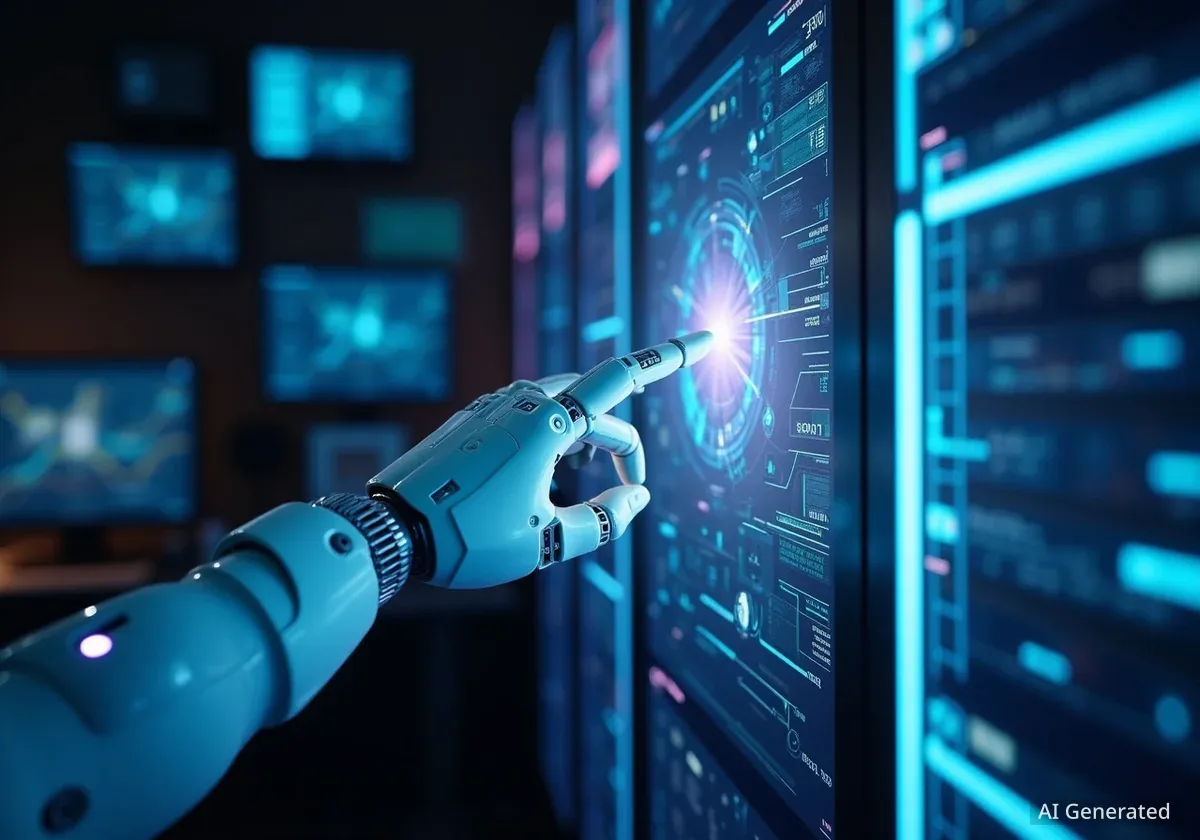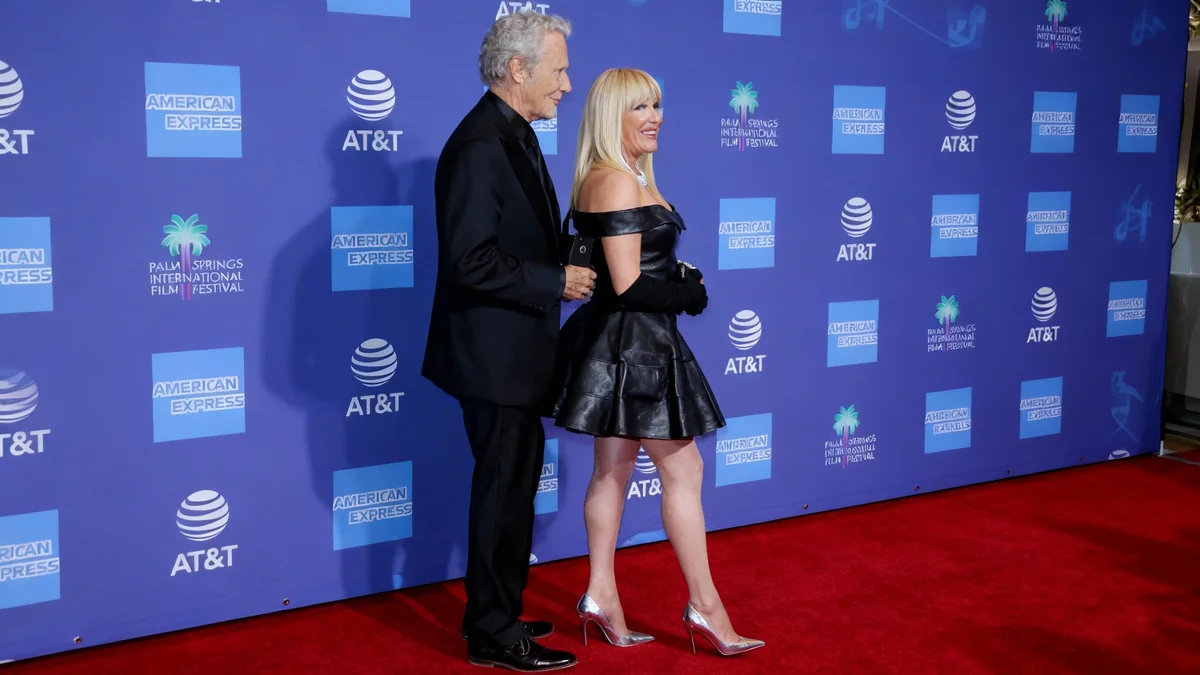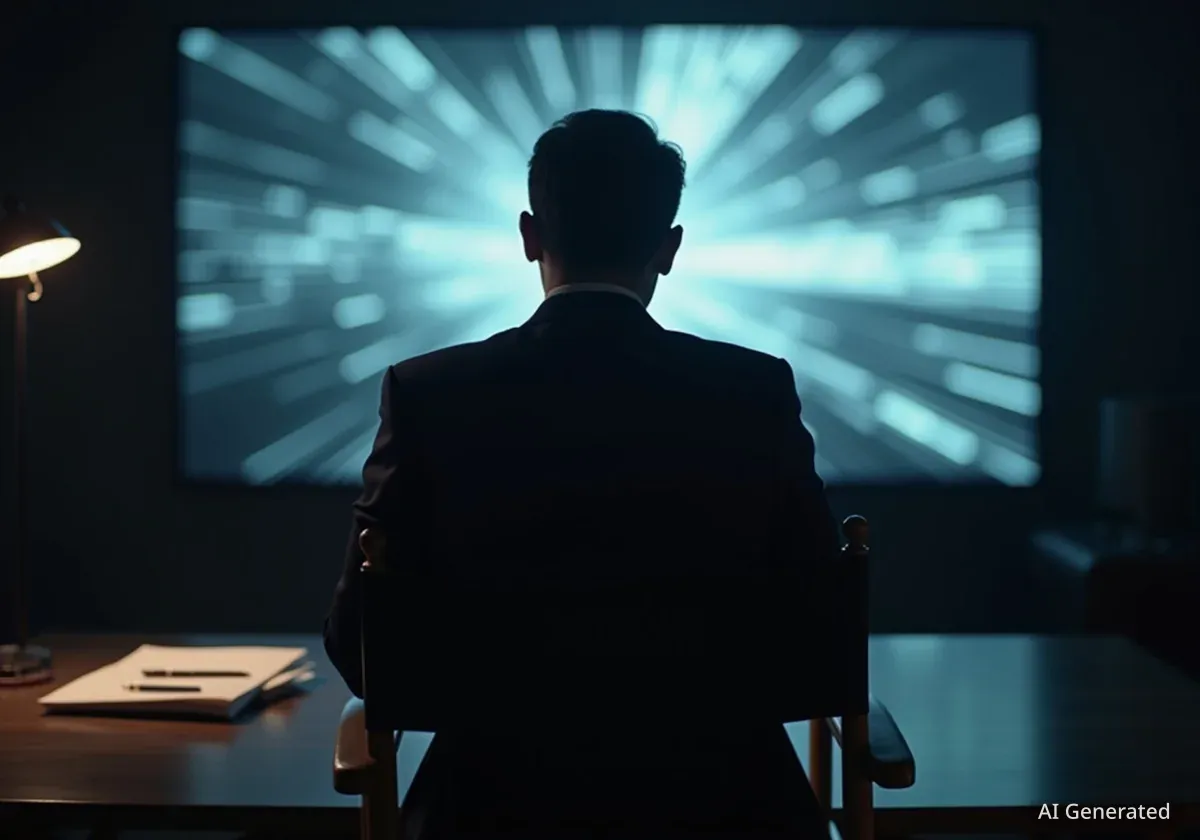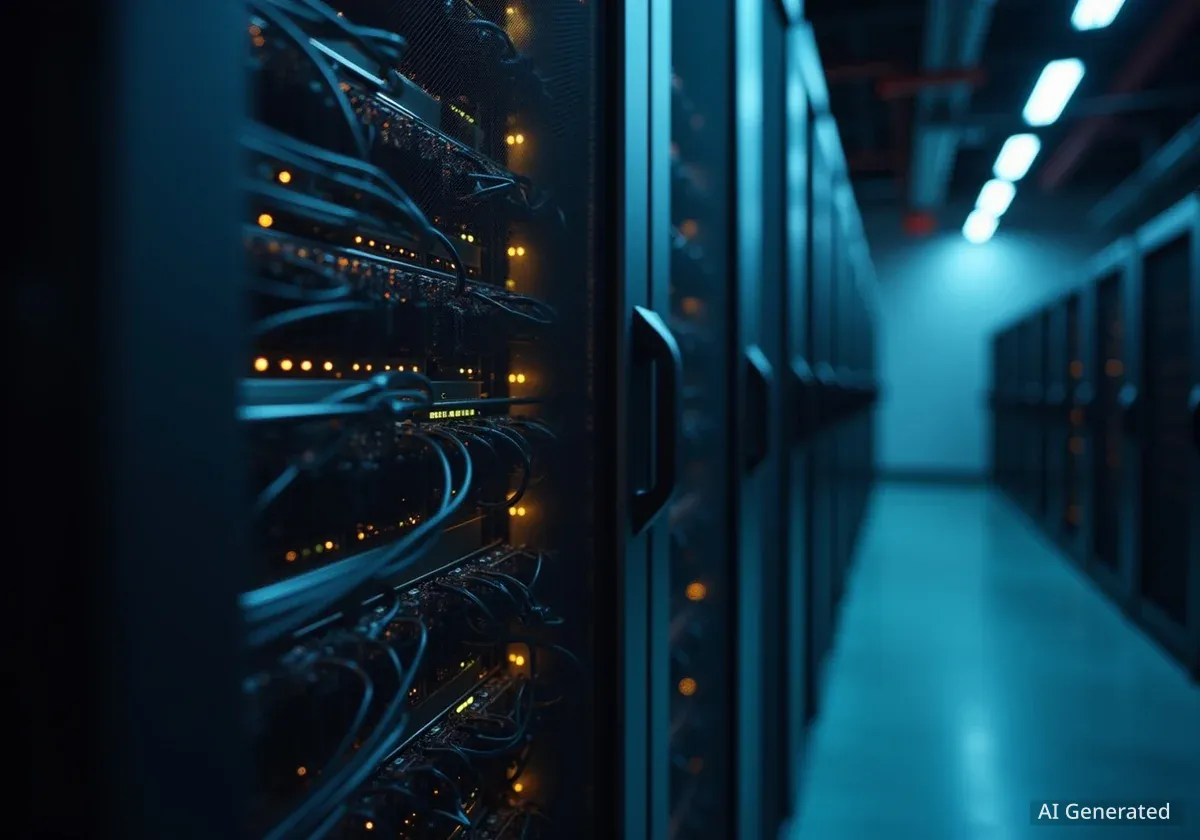Britain's Channel 4 recently aired a special documentary featuring an AI-generated news anchor, marking a significant moment for artificial intelligence in UK television. The hour-long program, titled "Will AI Take My Job?", explored the impact of automation on the modern workforce, culminating in the revelation that its presenter was not human.
This broadcast was part of the channel's "Dispatches" documentary series. It aimed to spark discussion about the growing influence of AI and the challenges of verifying digital content in an increasingly automated world.
Key Takeaways
- Channel 4's "Will AI Take My Job?" featured an AI-generated news anchor.
- The AI presenter revealed its non-human nature at the end of the program.
- A survey found 76% of UK bosses use AI for tasks previously done by humans.
- Channel 4 emphasizes its commitment to human, fact-checked journalism.
- The stunt highlights concerns about trust and authenticity in media.
The Unveiling of an AI Presenter
The AI anchor appeared throughout the special, reporting from various locations and narrating the program's segments. Its performance was designed to be realistic, guided by prompts to create a believable on-camera presence. This innovative approach was a collaboration between Kalel Productions and the AI fashion brand Seraphinne Vallora.
"AI is going to touch everybody’s lives in the next few years. And for some, it will take their jobs. Call center workers? Customer service agents? Maybe even TV presenters like me. Because I’m not real. In a British TV first, I’m an AI presenter. Some of you might have guessed: I don’t exist, I wasn’t on location reporting this story. My image and voice were generated using AI."
This statement, delivered by the AI host in the final moments of the broadcast, confirmed what some viewers might have suspected. The revelation served as a stark demonstration of AI's capabilities and its potential to mimic human roles in media.
AI in the Workplace: Key Statistics
- 76% of UK business leaders have adopted AI for tasks previously performed by humans.
- 66% of bosses are "excited" about AI's use in the workplace.
- 41% report reduced recruitment due to AI adoption.
- Nearly half expect further staff reductions within five years because of AI.
Channel 4's Stance on AI Journalism
Louisa Compton, Channel 4’s head of news and current affairs, clarified the network's position on using AI presenters. She stated that this specific instance was a stunt, not a permanent shift in their journalistic practices.
Channel 4 remains committed to human-led, fact-checked journalism. This approach underscores the importance of impartiality and trust, qualities that AI is not yet capable of replicating in the complex world of news reporting.
"The use of an AI presenter is not something we will be making a habit of at Channel 4 — instead our focus in news and current affairs is on premium, fact checked, duly impartial and trusted journalism — something AI is not capable of doing," said Louisa Compton. "But this stunt does serve as a useful reminder of just how disruptive AI has the potential to be — and how easy it is to hoodwink audiences with content they have no way of verifying."
The network confirmed that the stunt adhered to its editorial guidelines for AI use. The primary goal was to encourage viewers to consider questions of trust and authenticity in the digital age, especially when faced with increasingly sophisticated AI-generated content.
The Economic Impact of Automation
The documentary also delved into the findings of a Channel 4 survey. This survey gathered insights from 1,000 UK business leaders regarding AI adoption. The results paint a clear picture of AI's accelerating presence in the professional landscape.
A significant 76% of surveyed bosses have already integrated AI into tasks traditionally performed by human employees. Furthermore, 66% expressed enthusiasm for the technology's potential in their workplaces. However, the survey also highlighted the impact on employment. About 41% of companies have seen reduced recruitment due to AI. Nearly half anticipate further staff reductions over the next five years as AI capabilities expand.
AI in Media: A Wider Debate
The Channel 4 initiative follows other discussions surrounding AI-generated content in the entertainment industry. For instance, the controversy surrounding "Tilly Norwood," an AI-generated "actress," sparked strong reactions from actors' unions and agencies in Hollywood. SAG-AFTRA, a prominent union, issued a statement condemning the use of AI to create performers without permission or compensation, emphasizing the devaluation of human artistry and livelihoods.
Ethical Considerations and Future Outlook
The Channel 4 broadcast serves as a practical example of the ethical dilemmas presented by AI. While the network clearly stated its journalistic integrity relies on human input, the ease with which an AI presenter can be created raises important questions for media organizations and the public alike.
The ability of AI to generate realistic images and voices means audiences must become more discerning. Verifying the authenticity of content will become increasingly crucial. This event underscores the need for clear guidelines and public awareness regarding AI's role in information dissemination.
As AI technology continues to advance, its impact on various industries, including media, will only grow. The Channel 4 experiment offers a glimpse into a future where the lines between human and artificial content may blur, challenging traditional notions of authenticity and trust.
